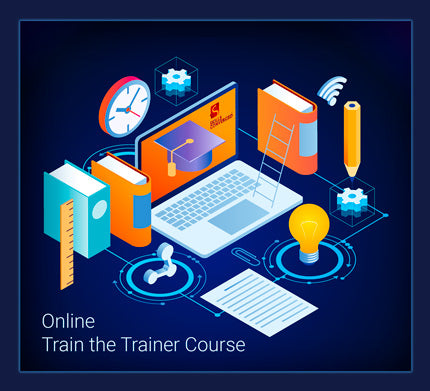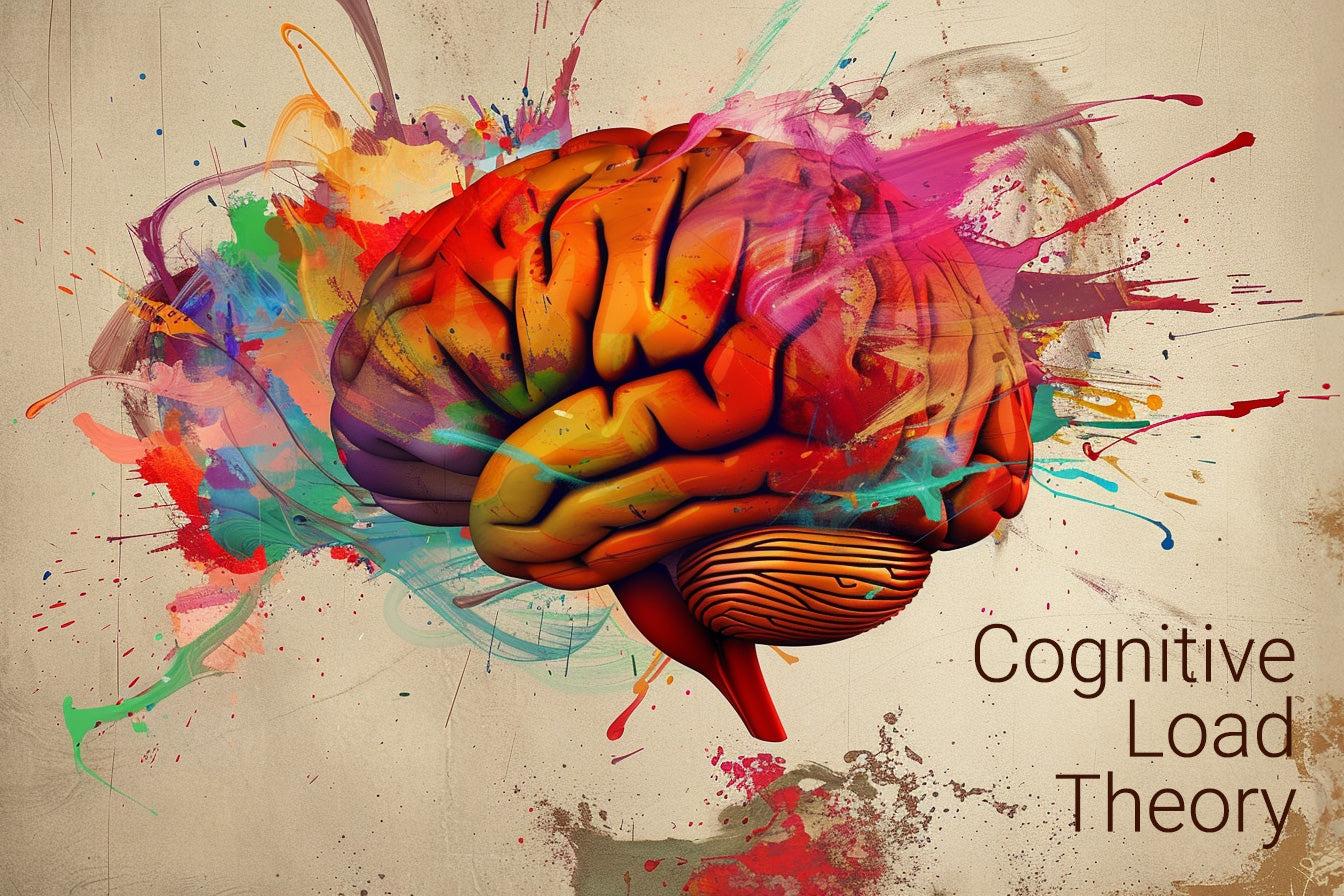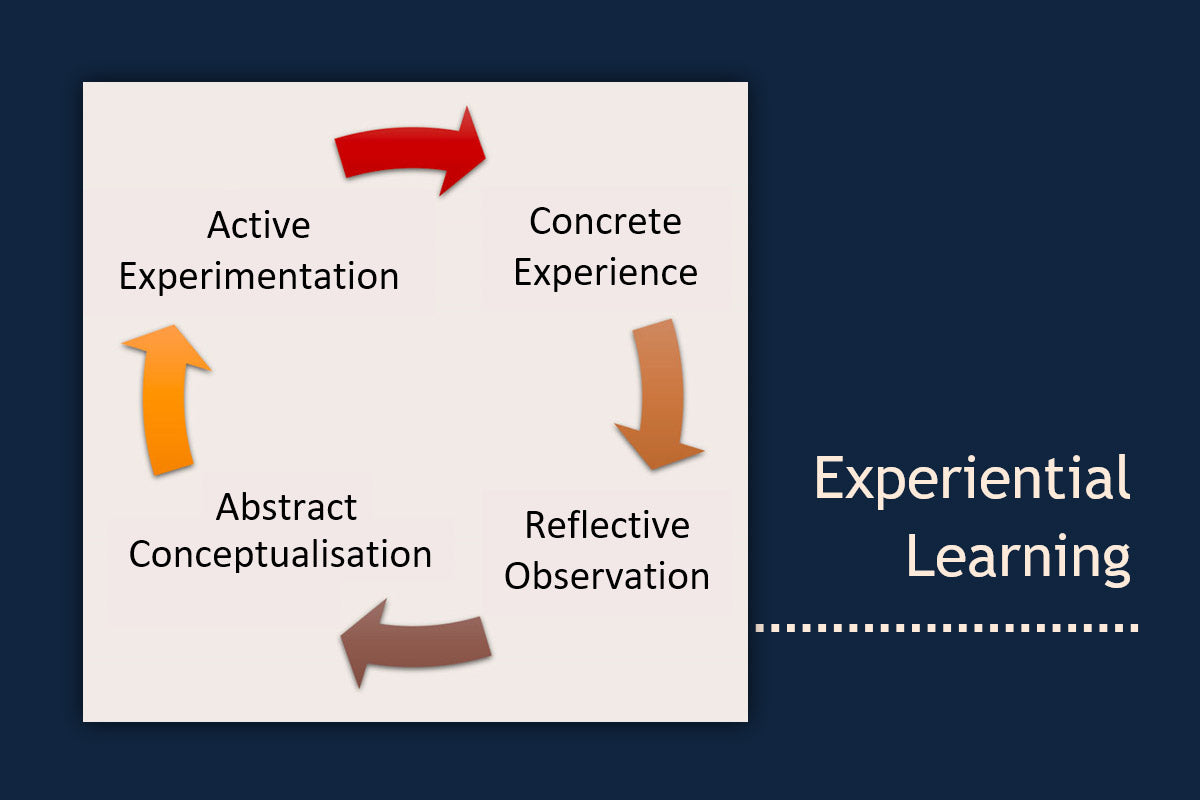Cognitive Load Theory (CLT) is a seminal framework in the field of educational psychology that focuses on how information is processed by the human brain during the learning process. Developed in the late 1980s by educational psychologist John Sweller, CLT has profoundly influenced instructional design and pedagogy by providing insights into the limitations of working memory and strategies for optimising learning. Sweller's states that for effective learning to occur, instructional methods must be designed in a way that takes into account the capacity of the human cognitive system.
At the heart of Cognitive Load Theory is the understanding that the human working memory is limited in both capacity and duration. As you know, working memory can only hold a small amount of information at any given time, and this information can only be retained for a short period unless it is actively processed and transferred to long-term memory. Sweller identified three types of cognitive load that can affect learning: intrinsic, extraneous, and germane.
Each plays a distinct role in the learning process:
- Intrinsic cognitive load relates to the complexity inherent in the material itself.
- Extraneous cognitive load refers to the load imposed by the way information is presented.
- Germane cognitive load involves the effort used in processing, constructing, and automating schemas. In other words, it is about constructing meaning from the material.
The implications of CLT for instructional design are significant. As a trainer or instructional designer, you should design and run your courses while acknowledging the different types of cognitive load and their impact on learning. CLT can help you create more effective teaching strategies that align with the cognitive processing capabilities of learners. This involves simplifying complex information, avoiding unnecessary or overly complicated instructional methods, and creating an environment that encourages active cognitive engagement with the material. The goal is to:
- Minimise intrinsic cognitive loads
- Minimise extraneous cognitive loads
- Maximising germane cognitive loads
Since its introduction, Cognitive Load Theory has evolved and expanded, incorporating insights from other fields such as cognitive science and neuroeducation. It has been applied to a wide range of educational contexts, from classroom teaching to online learning environments, and continues to inform best practices in curriculum development, instructional design, and educational technology. As such it is a valuable framework to use when it comes to designing training materials and courses.
My aim here is to give you an index of ideas and techniques for each of these three types of cognitive loads so you look up the list and make sure you always incorporate them. My focus is on presenting tangible techniques and examples, particularly within the realms of running short professional training courses (be they on technical topics or soft skills such as management and communication skills). The techniques apply irrespective of the medium used to teach (e.g. online, instructor-led, live-virtual, video and classroom-based). Take this as a list of ideas to get inspired by and expand on for each cognitive load category so you can improve your course design.
Reduce Intrinsic Cognitive Load
Here, we want to reduce content complexity and make it more ‘digestible’. Consider the following techniques:
Chunk Complex Subjects
Simplify complex subjects into bite-sized pieces. For instance, in a management course, break down the process of strategic planning into modular sections like vision setting, SWOT analysis, and action planning.
Tie Learning to Relevance
Ensure the learning material directly ties to your audience’s needs. For example, when teaching communication skills, use scenarios that mirror daily interactions of colleagues and their managers, making the learning immediately applicable.
Incorporate Feedback Mechanisms
Include continuous feedback mechanisms in your course. For example, employ quizzes or simulations that allow learners to immediately apply communication theories and receive feedback on their approach.
Tailor Learning Paths with Pre-Training Assessments
Start by assessing learners’ knowledge and skills to tailor learning experiences that match their expertise level, ensuring that the intrinsic load is optimised for each learner. Allow learners to choose their learning path, focusing on material most relevant to their needs and interests. This helps boost engagement too. For example, in project management course, customise content so that experienced learners can skip the basics and instead dive into more advanced strategies.
Integrate Dual Coding Theory
Enhance learning by combining text and visuals, which caters to different learning preferences and reduces intrinsic load. For example, use charts, diagrams, photos, data visualisation and illustrations alongside written explanations for clearer understanding.
Utilise Analogies and Metaphors
Explain complex concepts using analogies and metaphors, making them more accessible by relating them to known ideas or experiences. For instance, in a course on complex systems theory, you could liken the concept of emergent properties in systems to a symphony orchestra. Just as a beautiful piece of music arises not from individual instruments but from their coordinated interaction, complex systems exhibit properties and behaviours that cannot be predicted from the characteristics of the individual parts. This analogy helps learners understand how complex, interconnected systems can produce outcomes greater than the sum of their parts, making a potentially abstract concept more relatable and understandable.
Sequence Learning Material
Arrange your course content in a logical order, beginning with fundamental concepts and gradually progressing to more complex topics. This systematic approach ensures learners have a solid foundation upon which to build their understanding. For instance, in a coding course designed for beginners, start with the basics of writing simple lines of code and understanding programming logic. Once these are mastered, guide learners through developing small programs, gradually introducing more complex concepts such as data structures, algorithms, and object-oriented programming.
Incorporate Pre-Lesson Summaries
Provide a brief overview before each lesson to prepare learners for what they will learn. This can be particularly effective in technical courses such as teaching the use of a specific software, giving learners a roadmap of the concepts to be covered.
Limit Learning Objectives
Focus each module or lesson on a limited number of learning objectives. For example, in a marketing course, dedicate individual lessons to specific aspects like market research, SEO, content creation, branding, visual content design, etc.
Introduce Conceptual Frameworks
Use frameworks and models to organise complex information into understandable structures. For instance, in project management training, introduce the Project Management Triangle to conceptualise the balance of scope, time, and cost.
Use AI Image Generators
Add visual content to your training materials with the use of powerful AI image generators. Generate images that relate to the course content both to visualise abstract ideas and to use the images as catalysts for discussion, increasing curiosity and engagement in the course. See our comprehensive AI image generator exercise for ideas.
Minimise Extraneous Cognitive Load
Here, our focus on the way information is presented. We want to make it easy for learners to ‘consume’ the content and learn from it by presenting it clearly and concisely.
Streamline Content via Advanced Multimedia Principles
Apply Richard E. Mayer’s multimedia learning principles, such as the Coherence Principle, to eliminate unnecessary content. These principles represent a cornerstone in the field of educational psychology, offering a scientific approach to designing more effective instructional materials that cater to how the human brain processes and retains information. Among these principles, the Coherence Principle stands out for its emphasis on simplicity and focus in educational content. According to Mayer, learners better understand material when extraneous content is eliminated, suggesting that instructional designers should avoid adding irrelevant sounds, images, or text that don’t directly support the learning objectives.
The Coherence Principle is grounded in the cognitive theory of multimedia learning, which is based on the dual-coding theory and the cognitive load theory. It operates on the understanding that the human mind processes verbal and visual information in separate channels and that there is a limit to how much information can be processed at once. This is crucial when it comes to course design. I cover this in detail, along with Baddeley’s model of working memory in my book, Course Design Strategy.
Ensure that multimedia materials like videos and slides are focused and free from unrelated graphics or music that might distract learners. By removing non-essential decorative content, you reduce extraneous cognitive load, thereby freeing up cognitive resources to focus on the learning task at hand.
Simplify Materials
Remove clutter from your materials. Ensure slides, videos, and documents are free of unnecessary embellishments that do not serve the learning objective.
Design for Easy Navigation
Ensure your course is easy to navigate, with clear labelling, consistent formats, and intuitive progression.
Create Emotional Impact through Stories
Use compelling narratives that evoke emotion to maintain learners’ engagement without overwhelming them with extraneous details. For example, a story about a leader navigating a team crisis can make learning about empathy and leadership more relatable and less cognitively taxing. Integrate stories into lessons to make complex concepts more relatable and engaging, like using a crisis management narrative to introduce leadership skills under pressure.
Incorporate Achievement and Recognition
Design your course to include elements of achievement, like badges or certificates, for completing sections or mastering skills. This motivates learners and marks their progress, effectively managing extraneous load by signalling key milestones and accomplishments.
Employ Consistent Design Elements
Use a uniform design scheme across all course materials to reduce cognitive effort spent on adjusting to new layouts or styles, essential in e-learning environments.
Prioritise White Space
Design course materials with ample white space to prevent information overload and help focus attention on key concepts, beneficial in written documents and online modules.
Limit Hyperlinks in Text
Present hyperlinks at the end of sections or as a separate resource list to avoid interrupting the learning flow in online learning platforms. Limited use that doesn’t distract is fine, but Wikipedia style linking where each sentence contains several links can be an overkill for an online course. You are teaching a lesson, rather than providing a referenceable encyclopaedia.
Use Direct Instruction for Complex Tools
Offer straightforward, step-by-step instructions or tutorials for using complex tools or software.
Highlight Key Information
Emphasise critical points through bullet points, bold text, or colour to draw attention to the most important information, aiding retention without overwhelming the learner.
Enhance Germane Cognitive Load
Here, the aim is to maximise constructing meaning from the material.
Create Opportunities for Practice
Develop activities that allow for the application of course content. Role-playing exercises in communication training, for example, can help solidify concepts like active listening and empathy.
Facilitate Collaborative Learning
Organise group activities that encourage learners to teach each other, leading to a deeper understanding through peer interaction.
Encourage Real-World Application through Project-Based Learning
Promote the application of course concepts in real-world contexts. For instance, have learners in a project management course plan and execute a small project, applying techniques like stakeholder analysis, which reinforces learning and increases germane cognitive load by linking theory with practice.
Facilitate Peer Discussions for Collaborative Learning
Create opportunities for learners to teach and learn from each other through discussion forums or live sessions. This peer-to-peer learning approach deepens understanding and retention by engaging learners in the material more actively and personally.
Encourage Reflection
Motivate learners to connect new information with their experiences. Incorporate structured activities that encourage learners to reflect on their learning and how it applies to their personal or professional contexts. After sessions on negotiation techniques, for instance, prompt learners to reflect on and discuss past negotiations and how they might approach them differently with their new knowledge.
Implement Learning by Teaching
Encourage learners to prepare and present a topic to their peers, reinforcing their understanding and enhancing their engagement. This is effective in almost any subject area.
Introduce Problem-Based Learning
Challenge learners with real-world problems that require the application of course concepts to solve. This helps to encourage critical thinking and see where the lessons can be applied in the real world.
Use Self-Assessment Tools
Provide quizzes or reflective questionnaires for self-assessment, enabling learners to gauge their understanding and identify areas for improvement.
Encourage Cross-Curricular Projects
Design projects that require knowledge from multiple disciplines, promoting a broader understanding and application of concepts. This is particularly effective in teaching engineering or scientific subjects where knowledge of one area can often help with understanding another, or even getting inspired by approaches and solutions.
Facilitate Peer Review Sessions
Organise peer review activities where learners critique each other’s work, providing constructive feedback and creating a deeper understanding through evaluation and discussion, beneficial in writing-intensive courses.
Address Cognitive Dissonance
Cognitive dissonance, a concept I have found incredibly intriguing, was introduced by Leon Festinger in the 1950s. It describes the mental discomfort you experience when you hold conflicting beliefs, ideas, or values, or when new information clashes with your existing beliefs. This discomfort isn’t just a nuisance; it is a call to action, prompting you to resolve the contradiction and restore harmony within your mind. This has immense implications and as a result there has been an incredible amount of research in this area.
As trainers, when you introduce new information that challenges your learners’ preconceived notions or asks them to perform tasks that contradict their existing understanding, you are tapping into this powerful psychological phenomenon.
Let’s consider how this ties into Cognitive Load Theory (CLT), which focuses on optimising our mental resources. Cognitive dissonance can significantly increase the intrinsic cognitive load on your learners as they grapple with reconciling conflicting information. While this might seem counterproductive, it is actually a golden opportunity. By carefully inducing cognitive dissonance, you are not just adding to their mental workload; you are inviting them to engage more deeply with the material. However, the key is balance. You must ensure that this challenge doesn’t overwhelm the learners, as too much dissonance can impede learning rather than enhance it.
As you design your training courses, embrace cognitive dissonance as a tool. Challenge your learners, but do so in a way that supports their journey. Encourage them to question and reassess their pre-existing beliefs and assumptions. This doesn’t mean throwing them into the deep end without a lifeline. Instead, offer clear explanations, scaffold their learning experiences, and provide plenty of opportunities for reflection. By doing this, you are not just teaching them new information; you are helping them weave this knowledge into the fabric of their understanding. Remember, your goal is to create learning experiences that don’t merely inform but transform.
Consider the following techniques:
Break Down Complex Concepts
Tackle cognitive dissonance by breaking down challenging concepts into digestible parts, making it easier for learners to integrate new information with their existing beliefs.
Utilise Analogies and Visual Aids
Bridge the gap between new information and learners’ pre-existing beliefs through analogies or visual aids, easing the cognitive strain caused by conflicting information.
Introduce Conflicting Perspectives
Engage your learners with materials that present multiple viewpoints on a topic. This method provokes critical thinking and self-reflection, driving them to reconcile differing perspectives with their existing beliefs.
Facilitate Structured Debates
Organise debates where learners defend or argue against concepts that challenge their preconceived notions. This active engagement forces them to confront their cognitive dissonance head-on, promoting a deeper understanding of the subject matter.
Get Learners Reflect on the Dissonance
Allocate time for guided reflection sessions where learners can contemplate and articulate their thoughts on conflicting information. This reflection helps in assimilating new ideas with their existing knowledge, reducing cognitive overload and easing dissonance.
Promote Peer Teaching
Encourage learners to teach a concept, particularly one they initially disagreed with or found challenging, to their peers. This technique not only helps in overcoming cognitive dissonance but also solidifies their understanding, as teaching requires a comprehensive grasp of the subject.
Final Thoughts
Managing cognitive load is essential for creating effective and engaging training courses but remember that it is always a balancing act. By giving too little or too much, you could lose the learners. Focus on simplifying content, utilise multimedia wisely, ensure easy navigation (in online courses) and reduce extraneous details that don’t serve your objectives. Always aim to make learning as accessible and impactful as possible.

About the Author
Dr Ethan Honary is the founder of Skills Converged Ltd. A training consultant, researcher, author and designer with an aim to help trainers worldwide to improve training delivery and course design.
Course Design Strategy
Available as paperback and ebook
Online Train the Trainer Course:
Core Skills
Learn How to Become the Best Trainer in Your Field
Train The Trainer Book
Available as paperback and ebook
Explore Topics
Longform Train the Trainer Guides
All In-Depth Articles
CPD Accredited
Online Train the Trainer Course: Core Skills
Learn How to Become the Best Trainer in Your Field
Full Course Details
How to Reference This Article
Honary, E. (2024) "Apply the Cognitive Load Theory to Course Design", Skills Converged. Retrieved from: https://www.skillsconverged.com/blogs/train-the-trainer/apply-the-cognitive-load-theory-to-course-design











Leave a comment
All comments are moderated before being published.
This site is protected by hCaptcha and the hCaptcha Privacy Policy and Terms of Service apply.